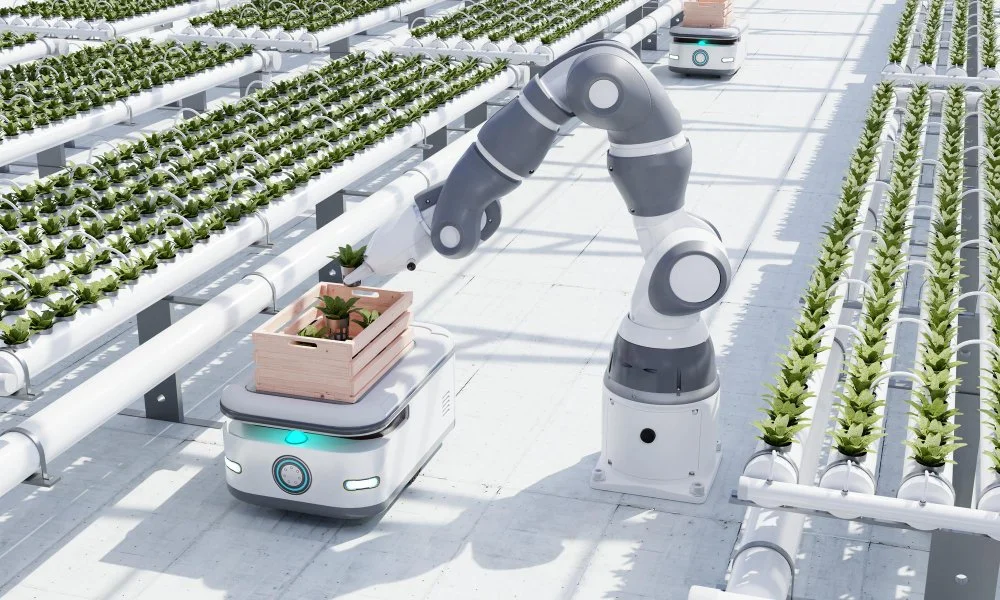What Is The Outlook Of Food Tech In The Year 2023?
/According to statistics, the food industry revenue for 2022 is 996.40 billion dollars, and it is expected to grow by 3.40% annually. Confectionery and snacks such as candies and gummies contribute to the major segment of this revenue, i.e. $299.50 billion dollars.
The reason behind the industry’s growth is the use of the latest technology. Food tech facilitates numerous industry operations like Manufacturing, packaging, distribution, and even consumption in some scenarios.
It might come as a surprise to you, but food tech has been a significant part of the food production process for supply chains for a long time. Only recently, with the advent of IoT, advanced machinery, and mobile application, has food tech been turning into a sector of its own.
With that being said, let’s dig deeper into the food tech in 2023.
● Effective Nutrition Tracking
People are health conscious now more than ever. They are improving their lifestyles, which means carefully selecting what they eat. Most of the readily available foods, even from restaurants and cafes, are high in calories and low in nutritional value. This is creating trouble for businesses to thrive.
Fortunately, using nutrition tracking devices and applications can improve food quality. It will allow you to keep count of calories, ingredient weights, and nutrient goals. It is especially helpful when preparing healthy packed meals.
Some countries are working on using AI (artificial intelligence) to monitor the nutritional status of every food product sold. It will address the concerns of consumers and rebuild their trust in the brands.
● Advancement In Manufacturing Equipment
Gone are the days when food product manufacturing was a daunting process. Now, companies, especially snack manufacturers, use state-of-the-art equipment throughout the process. Let’s take the example of a kid’s snack, gummy, to better illustrate this.
To create gummies, slurry (including water and flavor) is used. It makes the gummies clumped, especially without the appropriate care. This can potentially ruin the flavor and texture of the candy.
Now, the question is, how do manufacturers resolve this issue? The answer is using the latest gummy molds, oil and sugar coaters, warm activity meter, and more. From heating the ingredients to end product packaging while ensuring speed and product quality, the latest food tech equipment facilitates the manufacturing process.
So, if the food processing speed and quality are creating hitches for your business, it is time to upgrade the machinery and get a lead over the competitors.
● Lowering Food Wastage
Did you know that 30-40% of food supply accounts for food wastage? It is equal to 219 pounds of waste per person. Yes, you read it correctly. This is a pressing concern that needs to be resolved immediately.
Fortunately, different technologies can help lower food waste from its production to consumption stage without affecting its quality.
For instance, farmers are adding edible coating onto perishable fruits and vegetables to prolong their shelf life and freshness. Similarly, they are using 1-MCP to learn whether the food is ripe or not. Restaurants and food delivery services are also using AI to forecast demand to lower production as well as wastage.
In fact, these are just a few examples of how food tech in 2023 can lower wastage. There are numerous other technologies and applications that are assisting businesses and customers by raising awareness of this.
● Plant-Based Substitutes
Food science is taking further steps by addressing health and environmental concerns caused by poultry. Production of plant-based substitutes for meat is a popular example that you can consider. It provides consumers, including vegans, with adequate nutrients, while lowering the impact on the environment.
Food researchers are working with shear cell technology and high-moisture extrusion to develop a replacement for different meals. For example, using protein from vegetables can help lower the allergies caused by meat.
These substitutions are still under development, though if research keeps progressing, soon you will find healthy and eco-friendly substitutes for meat and other food products.
● Enhancing Food Safety
Last but not least, the latest advancements are improving the shelf life of products. Blockchain technology is assisting businesses with product supply, such as gaining information about product suppliers and recording their time.
Companies and restaurants are using food safety software to record the temperature of food, schedule cleaning and maintenance, and monitor supply. There are also noticeable improvements in product packaging so that food stays fresh and safe.
Not to forget, businesses in food industries must abide by state and federal laws to ensure food safety. Use of technology here acts as icing on the cake.
To Sum It All Up
Food tech has evolved tremendously in the past few years, and the industry is reaping tremendous benefits from it. Depending on what your business is in this sector, you can leverage these advancements to streamline operations and cater to the customer’s needs.

